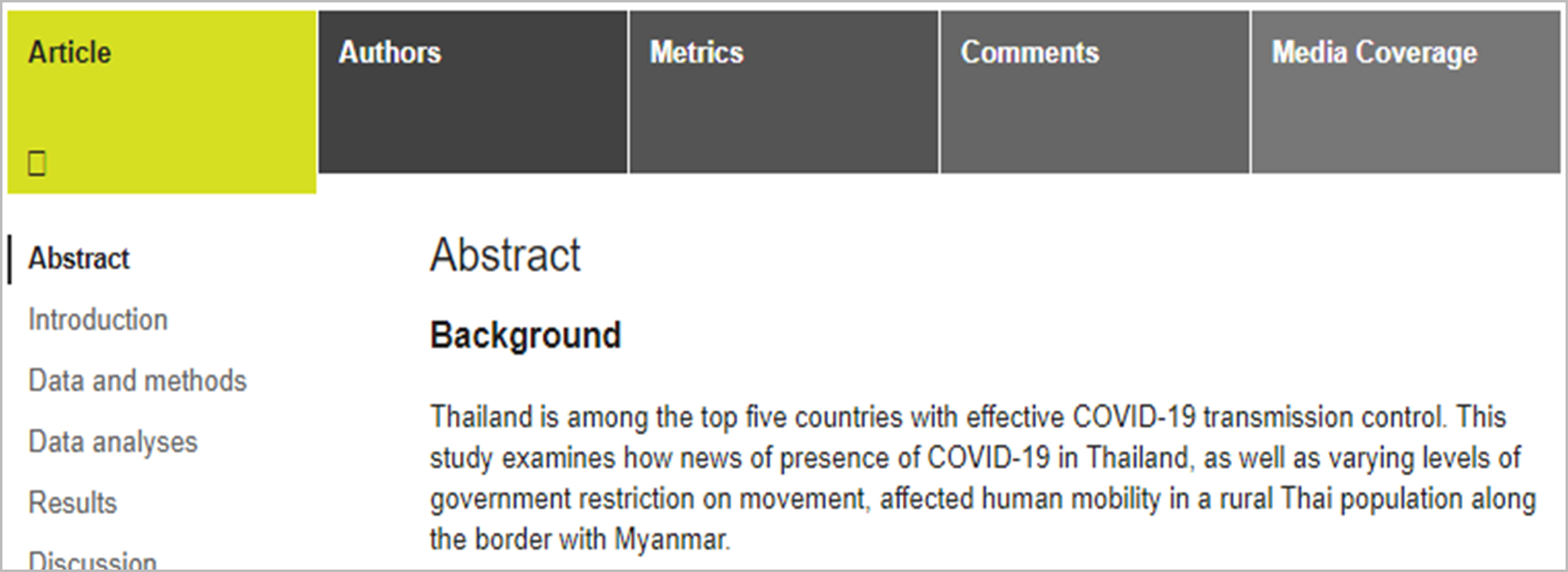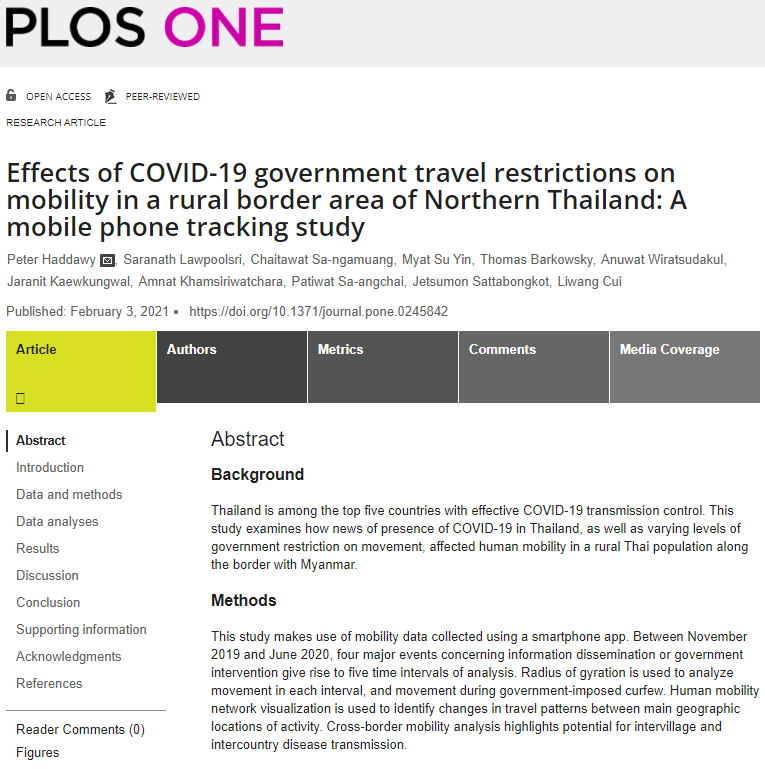Journal /Conference
PLOS ONE
Authors
Peter Haddawy (1 2), Saranath Lawpoolsri (3 4), Chaitawat Sa-Ngamuang (1), Myat Su Yin (1), Thomas Barkowsky (2), Anuwat Wiratsudakul (5), Jaranit Kaewkungwal (3 4), Amnat Khamsiriwatchara (4), Patiwat Sa-Angchai (3), Jetsumon Sattabongkot (6), Liwang Cui (7)
Affiliation
- Faculty of ICT, Mahidol University, Nakhon Pathom, Thailand.
- Bremen Spatial Cognition Center, University of Bremen, Germany.
- Department of Tropical Hygiene, Faculty of Tropical Medicine, Mahidol University, Bangkok, Thailand.
- Center of Excellence for Biomedical and Public Health Informatics (BIOPHICS), Faculty of Tropical Medicine, Mahidol University, Bangkok, Thailand.
- Faculty of Veterinary Science, Mahidol University, Nakhon Pathom, Thailand.
- Mahidol Vivax Research Unit, Faculty of Tropical Medicine, Mahidol University, Bangkok, Thailand.
- Division of Infectious Diseases and Internal Medicine, Department of Internal Medicine, University of South Florida, Tampa, Florida, United States of America.
Abstract
Background: Thailand is among the top five countries with effective COVID-19 transmission control. This study examines how news of presence of COVID-19 in Thailand, as well as varying levels of government restriction on movement, affected human mobility in a rural Thai population along the border with Myanmar. Methods: This study makes use of mobility data collected using a smartphone app. Between November 2019 and June 2020, four major events concerning information dissemination or government intervention give rise to five time intervals of analysis. Radius of gyration is used to analyze movement in each interval, and movement during government-imposed curfew. Human mobility network visualization is used to identify changes in travel patterns between main geographic locations of activity. Cross-border mobility analysis highlights potential for intervillage and intercountry disease transmission. Results: Inter-village and cross-border movement was common in the pre-COVID-19 period. Radius of gyration and cross-border trips decreased following news of the first imported cases. During the government lockdown period, radius of gyration was reduced by more than 90% and cross-border movement was mostly limited to short-distance trips. Human mobility was nearly back to normal after relaxation of the lockdown. Conclusions: This study provides insight into the impact of the government lockdown policy on an area with extremely low socio-economic status, poor healthcare resources, and highly active cross-border movement. The lockdown had a great impact on reducing individual mobility, including cross-border movement. The quick return to normal mobility after relaxation of the lockdown implies that close monitoring of disease should be continued to prevent a second wave.
DOI / Link
- 10.1371/journal.pone.0245842


